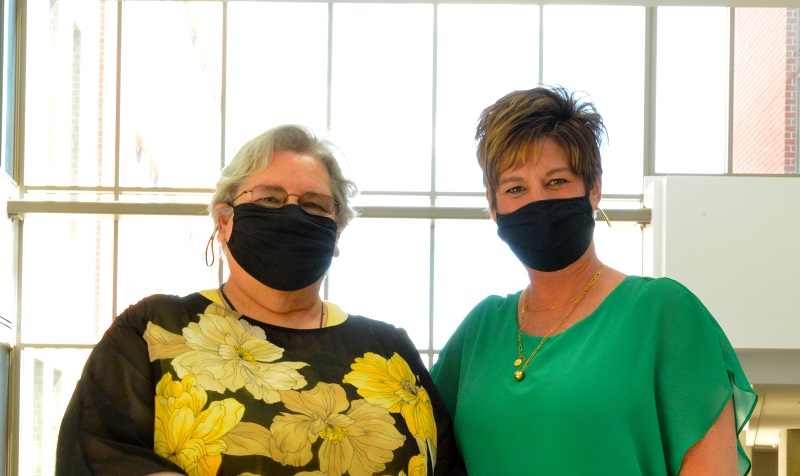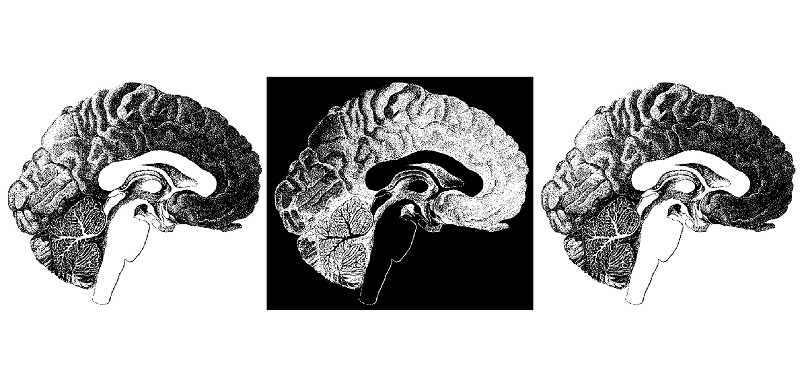First aid for the brain
Faculty at School of Medicine & Health Sciences introduce Mental Health First Aid program to second-year medical students

For most of us, particularly those trained in emergency medical services, first aid involves a series of tools or procedures designed to address a specific physical incident: a first-aid kit or CPR press, a roll of gauze or automated external defibrillator.
So what if the emergency in question doesn’t automatically involve the body?
Good thing there’s first aid for that too.
“It really is looking at how do you deescalate the situation, assess for suicidality or harm, and get the person to the help that they need,” explained Jacqueline Gray, speaking about the new UND School of Medicine & Health Sciences Mental Health First Aid (MHFA) training program.
“This interactive training gets people practicing some of these techniques [for dealing with colleagues in crisis], and gets them comfortable using more productive words and thinking about what kinds of phrasing may be helpful—and what’s not helpful.”
The concept of mental health “first aid” has been around for more than a decade, said Gray, associate director and research associate professor at UND’s Center for Rural Health. After learning about the MHFA concept from her Australian colleagues and being trained as a MHFA provider herself once the program was brought to the U.S. by the National Alliance on Mental Illness and National Council on Behavioral Health Care, she suggested exposing such training to both faculty and students at UND.
It took little effort to convince School Dean Dr. Joshua Wynne that embedding MHFA training in second-year medical students’ last classroom-based unit before sending them out for rotations in hospitals and clinics would be useful. So Gray and SMHS Wellness Advocate Michelle Montgomery made it happen.
“The goal is to get more and more people trained so that when someone is struggling, there’s a collection of people — peers — they can go to, whether Grand Forks or Bismarck,” said Montgomery. “Because that might be more comfortable than talking to someone who’s a staff member, more comfortable than talking to a faculty member.”

Data don’t lie
The statistics consistently show that the need for such a program is high — and growing amidst a global pandemic. Even before SARS-CoV-2 emerged last year, third-year medical students were more vulnerable to anxiety, depression, and suicidal ideation than their first- and second-year mates.
One British study from 2015, in fact, argues that there is “a significant increase in perceived stress” among medical students as they move from second to third-year. That same year, JAMA Psychiatry all but pleaded with medical colleges and clinical preceptors to address the fact that “(a) substantial body of evidence has demonstrated that [medical] trainees in particular are at high risk for depression and suicidal thinking.”
Because University of North Dakota medical students are not immune to such trends, Gray and Montgomery are rolling out a program that the data also show has a demonstrable benefit.
As Gray put it, researchers have found that after MHFA training, more people were willing to talk with a colleague about their depression or anxiety. One Australian trial of more than 300 randomized participants, for instance, found that individuals trained in Mental Health First Aid are more willing and able to offer help to others experiencing crises, advise people to seek professional help, and reduce stigmatizing attitudes.
“They were more comfortable stepping in, and their own mental health improved after going through these courses,” Gray said, “just because they had a better understanding of it. It also reduced their stigma [of mental illness].”
Not only is this extra “tool” in the student or faculty toolbox potentially life-saving, added Montgomery, but equally important is the culture-shift that she hopes will catch on schoolwide.
“If we can get to a culture where people are comfortable talking about this, it’s just better for everybody,” she said. “And not just comfortable talking about it, but knowing how to assess if someone is sort of in a bad situation and knowing what to say. You know, saying ‘You haven’t seemed yourself lately—what’s going on?’ matters. It’s that simple.”

Interactive, broad-based discussion
Part of what makes the Mental Health First Aid program so beneficial, added Gray, is its broad approach. Everything is covered, she said: depression, anxiety, psychosis, and substance abuse. And the highly interactive training, which does make use of an MHFA manual, gets students talking openly about how conversations around mental health can be most productive.
“Where some suicide trainings are really specific, [MHFA shows how] you can use some of these questions in everyday conversation in a way that can help pull someone out of a negative spiral and maybe change the trajectory of their thinking,” she said.
And so far, students are coming away from the training not only impressed, but thankful.
“As medical students, we certainly learn about the pathophysiology, clinical presentations, and medical management of mental health disorders,” said second-year medical student Natisha Corum when asked about the mental health training she completed at UND.
“What I believe MHFA offers that those other curricular elements may not is the framework for how to lead and guide the actual one-onone conversations and interactions with a person in crisis, whether a friend, family member, colleague, patient, or stranger.”
Much in the way basic life support students learn the “ABCs” — Airway, Breathing, Circulation — of emergency cardiopulmonary care, she said, MHFA students too learn the ALGEE acronym: Assess for risk of suicide or harm, Listen non-judgmentally, Give reassurance, Encourage appropriate professional help, and Encourage self-help.
“I was very pleased to have the opportunity to be a part of the mental health first aid training,” Corum added.
Next steps
Moving forward, Montgomery said that she and Gray hope to not only get more medical students interested in the training, but also expand it such that it can be its own elective course offering. And they’re looking to get health sciences students MHFA-trained and begin providing MHFA stickers and lapel pins for trainees to display.
“The goal is to get more and more people trained so that when someone is struggling, anybody in the building, there’s a list of people they can go to, who they can feel more comfortable talking to — whether that someone is a peer or staff member, or even a faculty member,” Montgomery concluded.
To that end, Montgomery will be joined by Melissa Naslund, who has assumed the role of “western” wellness advocate for UND medical students. Naslund, a Ph.D.-level mental health professional and director of behavioral science at the UND Center for Family Medicine in Minot, will provide health and wellness education and supportive services to third- and fourth-year medical students in the western part of the state. As time allows, this service may be expanded to residents, staff, and faculty.
Like the MHFA program, such a hiring is welcome, concluded Gray. “[Mental health] was an issue with medical students even before COVID,” she said. “It’s very stressful. Anyone can have a crisis.” And now — thanks to the MHFA program — more “first responders” will be on hand to help.
This story originally appeared in North Dakota Medicine.

About the author:
Brian James Schill is Director of the Office of Alumni and Community Relations at the UND School of Medicine & Health Sciences.


